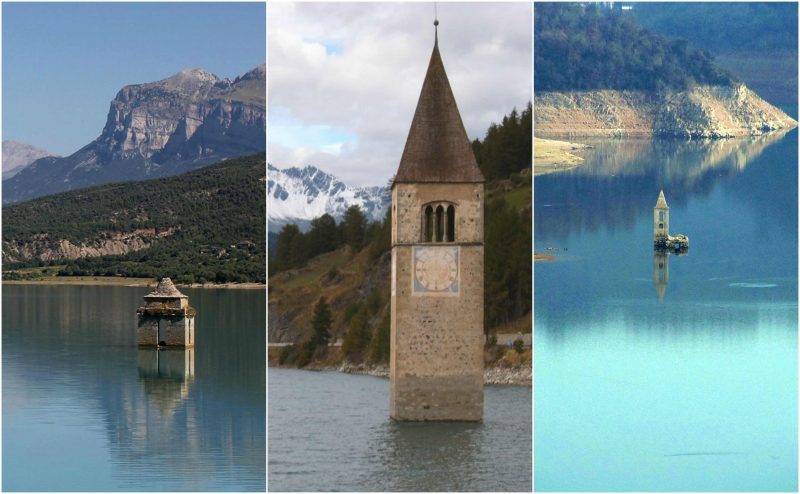Floods have taken away many towns, and while most of the buildings usually hide beneath the water, these towers still stand above as the only survivors of their drowned towns.
Check them out:
5. Potosi, Venezuela
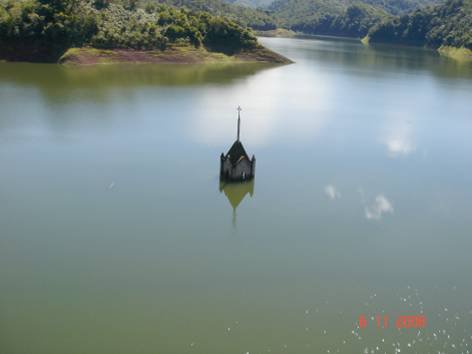
Prior to 1985, Potosí was a town of approximately 1,200 inhabitants.The then-president of Venezuela, Carlos Andres Perez, flew in by helicopter and announced that the town was to be evacuated and then flooded to build a hydroelectric dam.
After 26 years under water, there was a 98 feet (30 m) drop in the water level of the reservoir due to a drought. The church, grave markers, the ruins of houses and the outline of the former town square have reemerged with the church entirely exposed, although only its facade remains.
Some visitors have appeared as well, including Garcia who once worked at the church there who commented, “It brings me joy, but it also makes me sad to see the situation that we’re in.” The 2009-10 El Niño event is believed to be responsible for the severe drought afflicting the region
4.Kalyazin Bell Tower, Russia
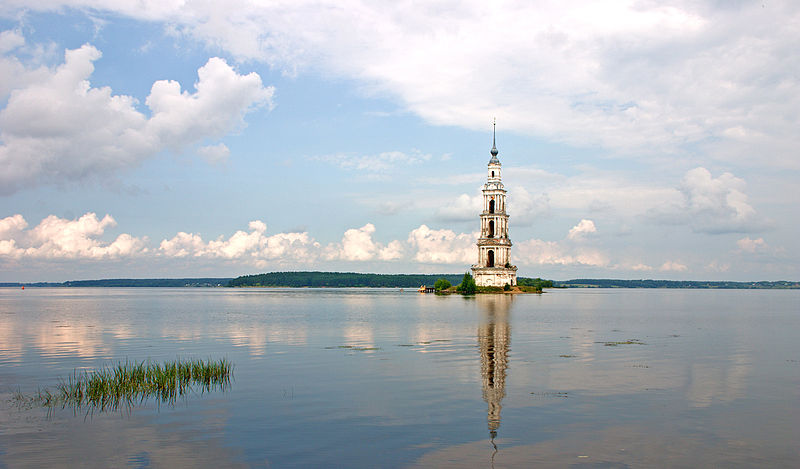
The steepled belfry was built in 1796—1800 as part of the Monastery of St. Nicholas, with a pentacupolar katholikon dating from 1694.Of its 12 bells, the largest weighed some 1038 poods (17,000 kg). It was cast in 1895 to commemorate the coronation of Nicholas II of Russia.
- When Joseph Stalin ordered the construction of the Uglich Dam in 1939 to form the Uglich Reservoir, the old part of Kalyazin, including several medieval structures, were submerged under the reservoir’s waters.
- This included the Saint Nicholas Monastery and Troitsky Makariev Monastery.The katholikon was dismantled, while the campanile was left, a landmark towering above the water.
3.The Church of Sant Romà,Spain
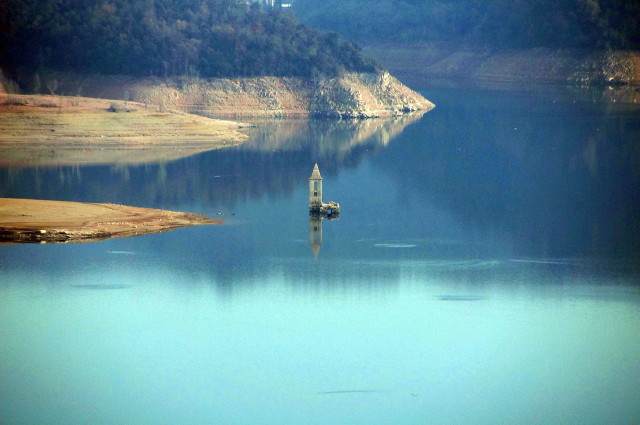
The Church of Sant Romà is a submerged church located in Sant Romà de Sau, a village now submerged under the Sau dam, in the municipality of Vilanova de Sau, Catalonia, Spain. When the level of waters is low, the Church of Sant Romà is visible
2.Church of Mediano
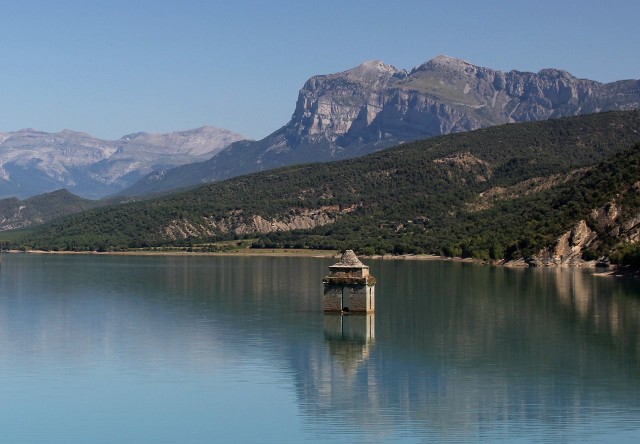
The Church of Mediano is a 16th-century submerged church located in Mediano, a submerged municipality in La Fueva, province of Huesca, Spain.The church was submerged in 1974 to create the Mediano Reservoir.
1. The 14th-century church bell tower submerged in Lake Reschen, Italy
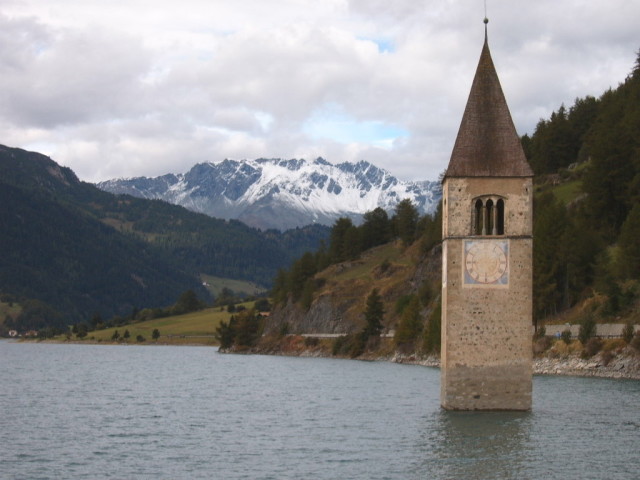
Lake Reschen is an artificial lake in the western portion of South Tyrol, Italy, approximately 2 km (1 mi) south of the Reschen Pass, which forms the border with Austria, and 3 km east of the mountain ridge forming the border with Switzerland. With its capacity of 120 million cubic metres (97,000 ac·ft) it is the largest lake in the province.
Its surface area of 6.6 km² makes it also the largest lake above 1,000 m in the Alps. It is fed by the Adige, Rojenbach and Karlinbach and drained by the Adige.The lake is famous for the steeple of a submerged 14th-century church; when the water freezes, this can be reached on foot.
A legend says that during winter one can still hear church bells ring. In reality the bells were removed from the tower on July 18, 1950, a week before the demolition of the church nave and the creation of the lake.
